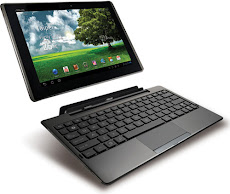I'm going to outline the process of connecting under XP, but I have a link that will take you through the process in either XP or Vista: Wireless Connection with XP or Vista
Under XP you need to watch the task bar near the clock. Look for this icon:  It may have a red slash or X through it if you are not connected. Right click on this icon and get this menu:
It may have a red slash or X through it if you are not connected. Right click on this icon and get this menu:
 It may have a red slash or X through it if you are not connected. Right click on this icon and get this menu:
It may have a red slash or X through it if you are not connected. Right click on this icon and get this menu:  If you click on View Available Wireless Networks and you will get a list of wireless connections in your area. The list will also tell you if the connections are secure and the SSID (network name). If the connection is listed as secure you will need the pass code (from the owner) to log on that network and get the Internet. IF the connection is unsecured you can just highlight the networks name and click on Connect. IF there are no networks listed then there are no available networks where you are.
If you click on View Available Wireless Networks and you will get a list of wireless connections in your area. The list will also tell you if the connections are secure and the SSID (network name). If the connection is listed as secure you will need the pass code (from the owner) to log on that network and get the Internet. IF the connection is unsecured you can just highlight the networks name and click on Connect. IF there are no networks listed then there are no available networks where you are.Once you connect the little icon in the task bar will no longer have the red X or slash and when you hover your mouse over the icon it will tell you what network you are connected to and the quality of the connection (Excellent, Good, low, very low).
Note that not all networks share the Internet. Some are there to share files or printers.
Here are two good sites to fine a free connection where you are: JWIRE


